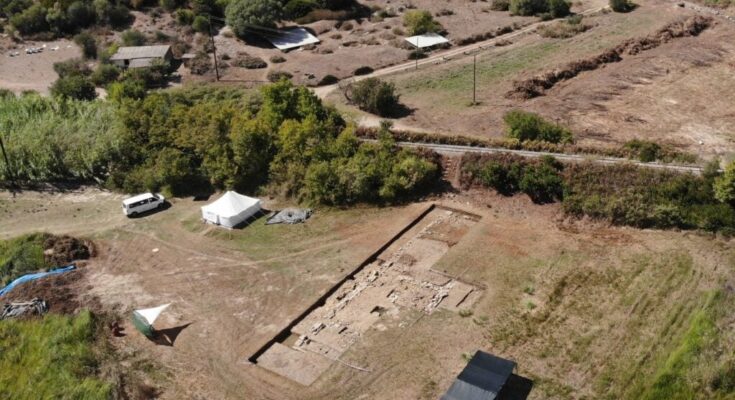
This year’s excavations brought forth new findings of the Temple of Poseidon, which was discovered in 2022 at Samiko in the Western Peloponnese, Greece.
As stated in the announcement of the Greek Ministry of Culture, the excavations revealed a building that resembles a temple. It was at least 91 feet (28 meters) long and consisted of two large interior rooms dating back to the 6th century BC.
New discoveries at the Temple of Poseidon
Research has shown that, at the beginning of the 3rd century BC, the roof was removed and the tiles were laid inside the building, covering the original level of use. It is believed that the building was abandoned at this time.
Fragments of an archaic marble vessel were found on the floor of the second room of the temple. The vessel was used for ritual cleansing and had been repaired, as indicated by the metal connectors holding the pieces together. Along with the fragment discovered in 2022, the vessel can now be restored almost in its entirety.
How it all started
As it is close to the ancient citadel of Samikon, earlier researchers had believed that the site of Kleidi (meaning “key”), where the temple-like building was found, could potentially be the location of the ancient sanctuary.
According to ancient Greek geographer Strabo (in the eighth volume of his work Geographics), the sanctuary of Poseidon was a cult center of the cities of Triphylia and was located near the sea under the acropolis of Samiko.

The bronze plaque
One of the most important discoveries of this year’s excavation is a bronze plaque, which probably once adorned a temple wall.
Examination of the object by the archaeologists revealed that one side of the bronze plate has a large inscription, which seems to have been fully revealed during its conservation in the lab of the Ephorate of Antiquities of Elis.
Finally, the archaeologists revealed a robust wall, first identified by Wilhelm Dorpfeld at the beginning of the 20th century. The wall seems to be the northern end of the enclosure of the sanctuary of Poseidon.
A historical documentary will be shot at Samiko
According to a post by the Austrian Archaeological Institute, the filming of the excavations began in September at the “Kleidi” site in Kato Samiko, as well as at several other sites in Elis. The aim is to create a historical – educational documentary entitled Thermopylae of the Peloponnese.
The filming takes place within the framework of the five-year research project of the Austrian Archaeological Institute and the Department of Antiquities of Elis. The documentary, which is of a scientific, cultural, and educational character, will consist of seven episodes and will be shown on the website of the Gerda Henkel Foundation.



